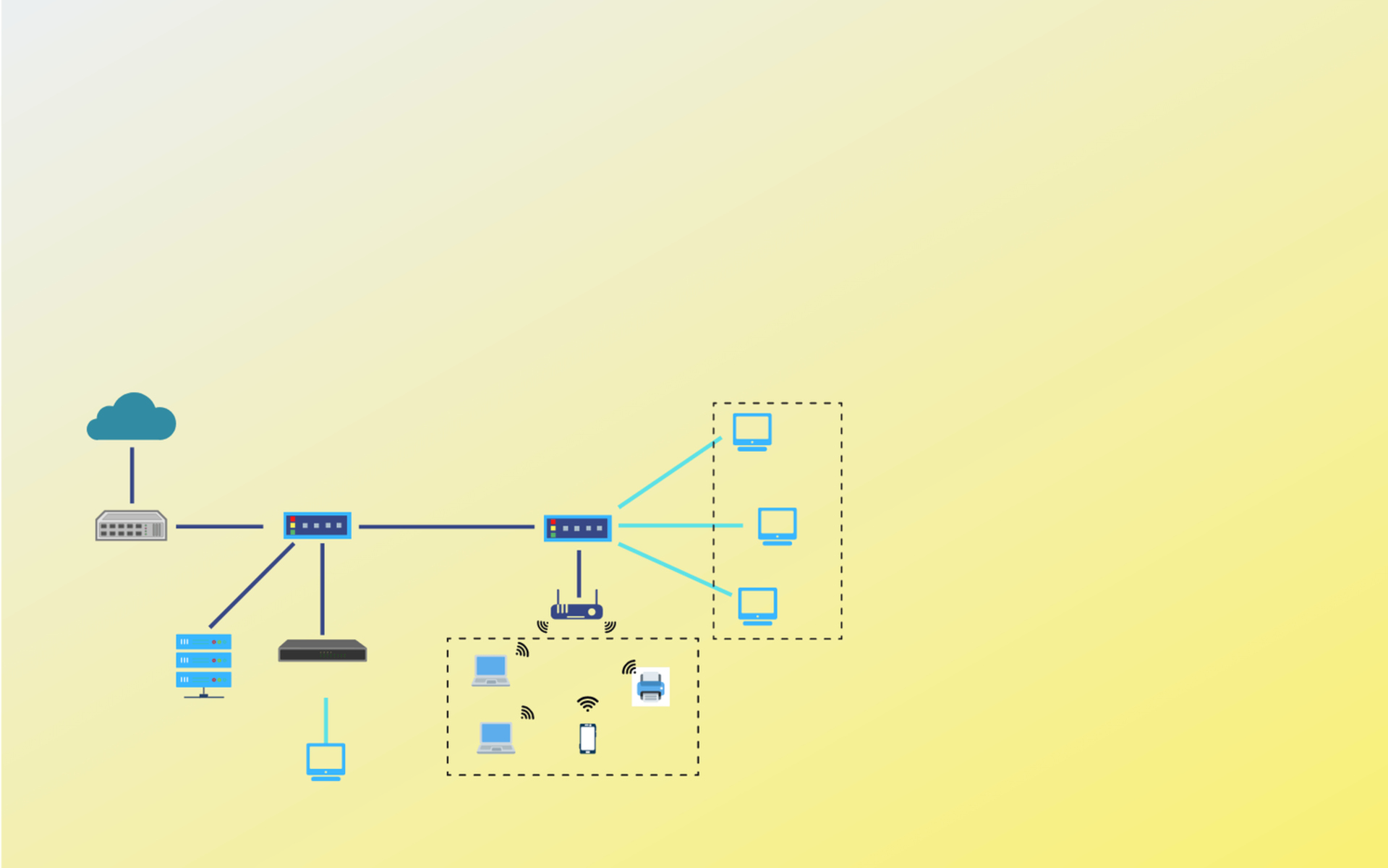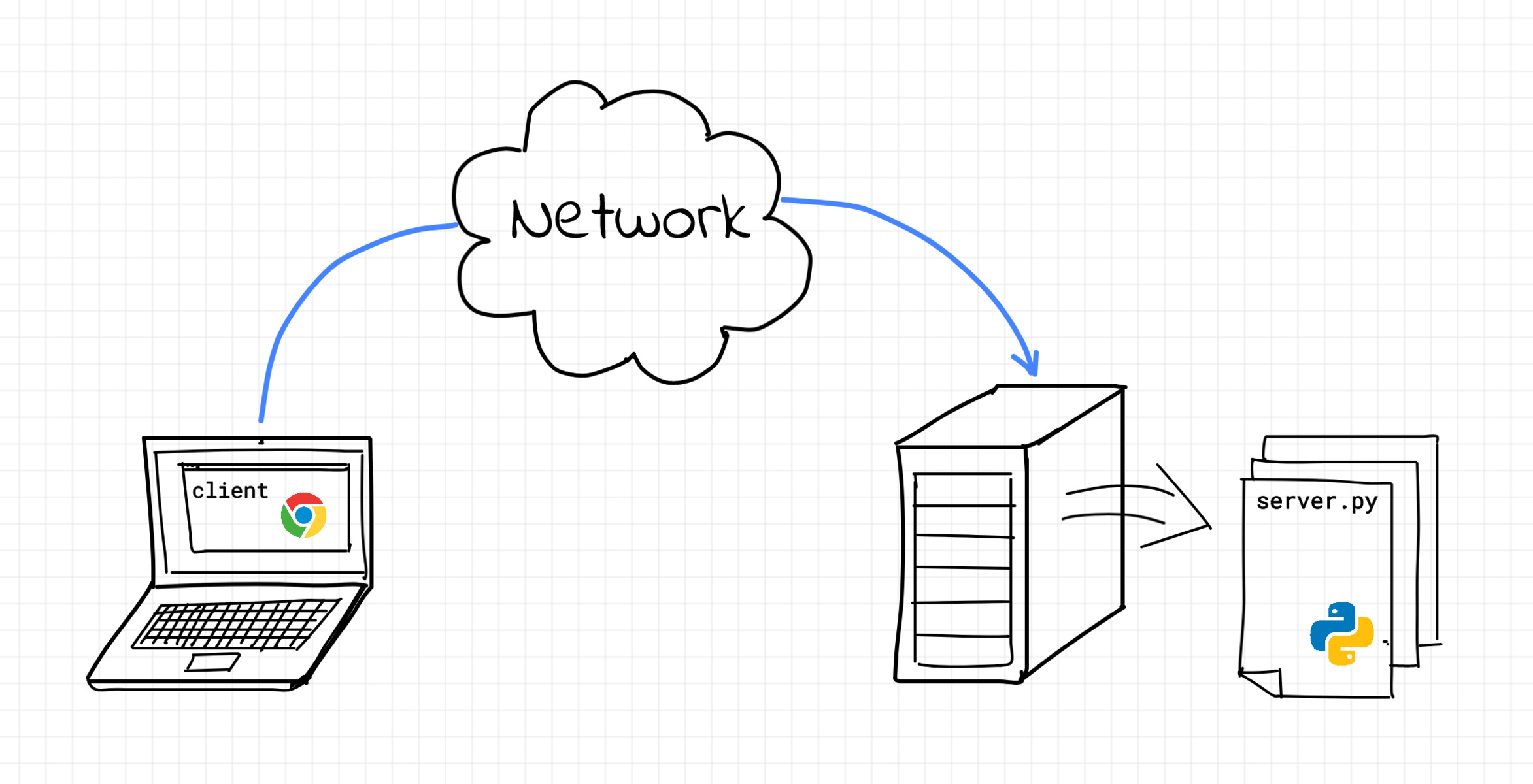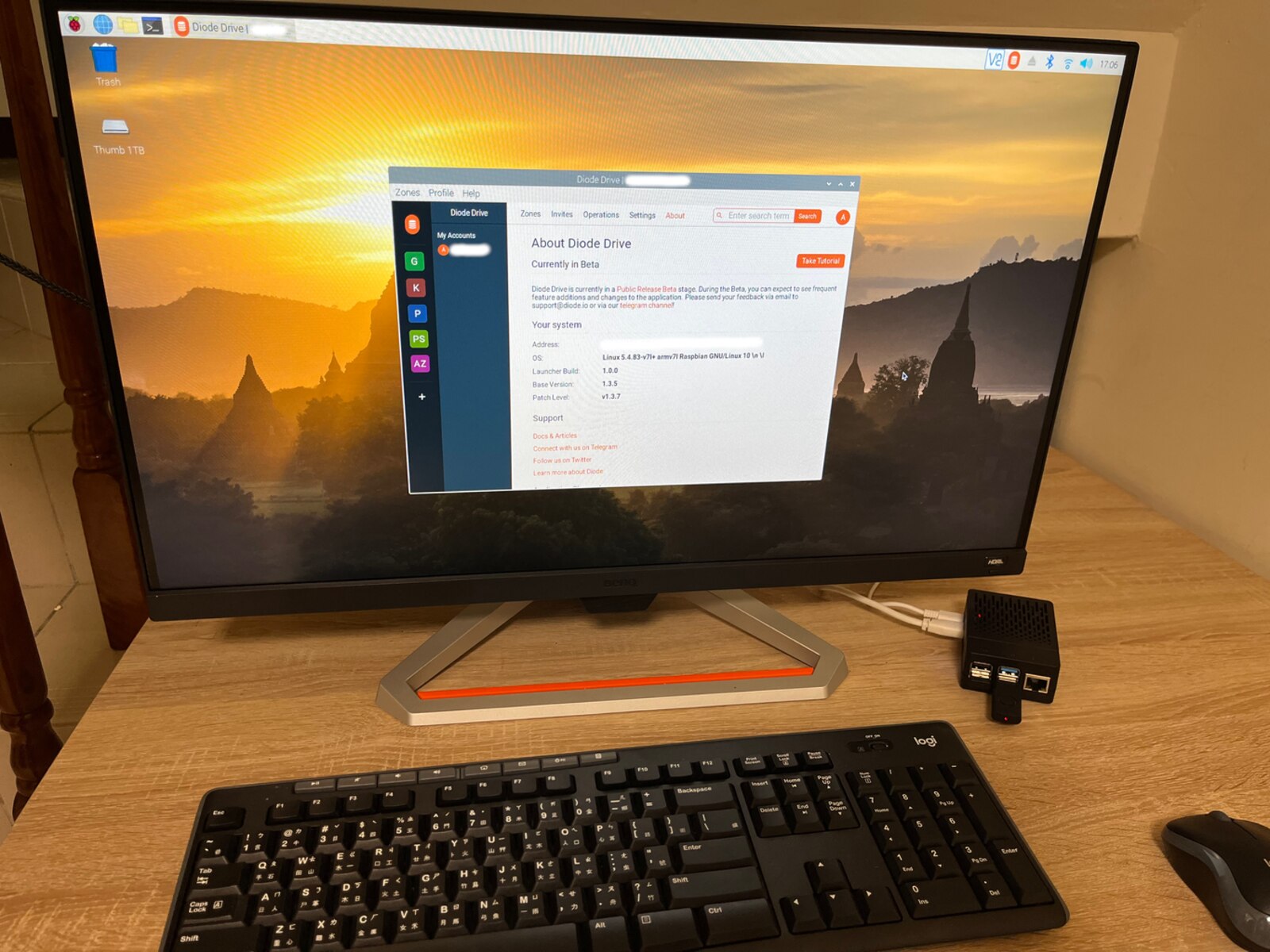Introduction
In today’s interconnected world, establishing and maintaining a reliable TCP connection to a workstation is crucial for seamless communication and data transfer. TCP (Transmission Control Protocol) ensures the delivery of data packets over the internet in a reliable and ordered manner, forming the backbone of most internet-based applications.
Whether you’re a network administrator, IT professional, or simply a curious user, it is essential to be able to verify the existence of a TCP connection to a workstation. This verification helps troubleshoot connectivity issues, identify potential security risks, and ensure the smooth functioning of network-dependent applications.
Throughout this article, we will explore various methods to verify the presence of an established TCP connection to a workstation. These methods range from using built-in command-line tools to analyzing network traffic in order to gain insights into the connection status.
By understanding these methods and their implementation, you will have the necessary skills to diagnose and rectify any connection-related issues effectively.
So, let’s delve into the details and discover how to verify the existence of a TCP connection to a workstation in different scenarios and environments.
TCP Connection Basics
Before we dive into the methods of verifying a TCP connection to a workstation, let’s first understand the basics of how TCP connections are established and maintained.
TCP follows a three-way handshake process to establish a connection between two endpoints, such as a client and a server. The handshake involves three steps:
1. SYN: The client initiates the connection by sending a SYN (Synchronize) packet to the server. This packet contains a random initial sequence number.
2. SYN-ACK: Upon receiving the SYN packet, the server responds with a SYN-ACK (Synchronize-Acknowledge) packet. This packet acknowledges the client’s SYN and contains the server’s own random initial sequence number.
3. ACK: In response to the SYN-ACK packet, the client sends an ACK (Acknowledge) packet to confirm the establishment of the connection. This ACK packet contains the next sequence number that the client expects from the server.
Once the three-way handshake is complete, a TCP connection is said to be in an established state. Both the client and the server can then exchange data packets over this connection.
It’s important to note that TCP connections are uni-directional, meaning data can flow in both directions. Each endpoint keeps track of the sequence number and acknowledges the receipt of packets to ensure reliable data transfer.
TCP also employs various mechanisms for congestion control and error recovery, such as flow control, retransmission of lost packets, and acknowledgment of received packets.
Understanding these basics will help us in verifying the existence of an established TCP connection to a workstation. Let’s explore the methods in the following sections to see how they can be applied in practice.
Methods to Verify TCP Connection to a Workstation
Now that we have a solid understanding of TCP connection basics, let’s explore several methods to verify the existence of a TCP connection to a workstation. These methods will help you gain insights into the status of a connection, identify any anomalies, and troubleshoot connectivity issues.
1. Using netstat Command: The netstat command is a powerful tool available on most operating systems. It allows you to view active network connections, including TCP connections. By running “netstat -an” in a command prompt or terminal, you can see a list of current connections and their associated IP addresses and port numbers.
2. Checking Open Network Connections in GUI: Most operating systems provide graphical user interfaces (GUI) where you can navigate to network settings or network connection status. These interfaces often display open TCP connections, allowing you to verify the presence of a connection and its associated details.
3. Using TCPView in Windows: TCPView is a handy utility developed by Microsoft that provides a graphical representation of all TCP and UDP connections on a Windows system. It offers real-time monitoring, allowing you to see the status, process ID, local and remote IP addresses, and other relevant information of each connection.
4. Utilizing Command Line Tools: Apart from netstat, there are other command-line tools specific to certain operating systems. For example, Windows users can use “tasklist” and “taskkill” commands to check for active processes, while Linux users can utilize “lsof” to list open files and connections.
5. Checking Firewall and Security Settings: Firewalls and security settings can block or restrict TCP connections. Verify that the workstation’s firewall is not blocking the desired ports or protocols required for the connection. Additionally, check any security software or settings that might interfere with network connections.
6. Using Port Scanning Tools: Port scanning tools like Nmap can help you identify open ports and determine if a TCP connection is possible on a specific port. By scanning the target workstation’s IP address, you can gather information about open ports, available services, and their associated protocols.
7. Analyzing Network Traffic: Network monitoring tools like Wireshark allow you to capture and analyze network traffic. By examining the packets flowing between the workstation and other devices, you can verify whether a TCP connection is established, monitor its activity, and diagnose any issues.
These methods provide a range of options to verify the existence of a TCP connection to a workstation. Depending on your operating system and specific requirements, choose the method that suits your needs best.
In the following sections, we will dive deeper into each method, providing step-by-step instructions and additional insights to help you successfully verify TCP connections to workstations.
Use netstat Command
One of the most commonly used methods to verify TCP connections to a workstation is by utilizing the netstat command. Netstat is a command-line utility available on most operating systems, including Windows, macOS, and Linux.
To use the netstat command, follow these steps:
1. Open a command prompt or terminal on your workstation.
2. Enter the following command: netstat -an
3. Press Enter to execute the command.
The netstat command will display a list of active network connections, including TCP connections. Each connection will be accompanied by its local address, foreign address, state, and other relevant details.
The local address represents the IP address and port number of your workstation, while the foreign address indicates the IP address and port number of the remote endpoint with which the TCP connection is established.
The state column indicates the current state of the TCP connection, such as ESTABLISHED, CLOSED, CLOSE_WAIT, etc. The ESTABLISHED state signifies that a TCP connection is successfully established, while other states may indicate connection issues or closed connections.
By scanning through the netstat output, you can easily identify any established TCP connections to your workstation. Additionally, you can find useful information about the remote endpoint, such as the IP address, port number, and the TCP protocol being used.
It’s important to note that netstat may display a large amount of information, especially on busy systems. You can refine your search by using different flags with the netstat command. For example, netstat -anp tcp will only show TCP connections, netstat -an | grep "ESTABLISHED" will filter the output to show only the established TCP connections, and so on.
By using the netstat command, you can quickly validate the existence of TCP connections to your workstation, identify the remote endpoints, and gather essential information for troubleshooting purposes.
In the next section, we will explore another method to verify TCP connections by checking open network connections in the GUI.
Check Open Network Connections in GUI
Another method to verify TCP connections to a workstation is by checking open network connections in the graphical user interface (GUI). Most operating systems provide a network settings or network connection status interface that allows users to view active connections.
Here’s how you can check open network connections in the GUI:
1. Open the network settings or network connection status interface on your workstation. The exact location of this interface may vary depending on your operating system.
2. Look for a section or tab that displays active connections or network statistics.
3. In this section, you should be able to see a list of open network connections, including TCP connections. Each connection entry will typically provide information such as the local address, foreign address, port number, and protocol.
4. Scan through the list of connections to identify any established TCP connections to your workstation. The established state indicates that a TCP connection has been successfully established.
In some operating systems, you may have the option to sort the connections based on various criteria, such as local address, foreign address, or state. Sorting the connections can make it easier to locate specific TCP connections and track their status.
The GUI interface offers a user-friendly and visual way to check open network connections. It allows you to quickly visualize the established TCP connections to your workstation without the need for command-line tools or complex commands.
It’s worth noting that the specific steps and options for checking open network connections may differ between operating systems. It’s a good idea to consult the documentation or search for specific instructions tailored to your operating system and version.
In the next section, we will explore how to use TCPView, a utility developed by Microsoft, to further analyze and verify TCP connections in Windows.
Use TCPView in Windows
If you are using a Windows operating system, a powerful tool called TCPView can be incredibly helpful in verifying and analyzing TCP connections on your workstation. TCPView is a graphical utility developed by Microsoft’s Sysinternals team.
Here’s how you can use TCPView to verify TCP connections in Windows:
1. Download TCPView from the official Microsoft website or other trusted sources. Make sure to download the version compatible with your Windows operating system.
2. Once downloaded, run the TCPView executable file to launch the program.
3. TCPView will display a list of all active TCP and UDP connections on your system. The list includes information such as the process ID (PID), local address, foreign address, state, and port numbers associated with each connection.
4. Scroll through the TCP connections and look for the ones related to your workstation. These connections will have the local address set as your workstation’s IP address.
5. The state column in TCPView will indicate the current state of each TCP connection, such as ESTABLISHED, SYN_SENT, TIME_WAIT, and so on. The ESTABLISHED state signifies a successfully established TCP connection.
By using TCPView, you can easily visualize all TCP connections on your workstation in real-time. It provides valuable information about the process ID associated with each connection, allowing you to identify the specific application or service responsible for the connection.
TCPView also updates the list dynamically, so you can monitor changes in the connection states or identify any new TCP connections that are being established or closed.
In addition to providing a comprehensive view of TCP connections, TCPView allows you to terminate or close specific connections if needed. Right-clicking on a connection in the TCPView interface gives you the option to end the connection or kill the associated process.
By using TCPView, you can effectively verify TCP connections on your Windows workstation, track their states, identify the applications or services utilizing the connections, and take necessary actions when required.
In the next section, we will explore other command-line tools that can be used to verify TCP connections on various operating systems.
Utilize Command Line Tools
In addition to the netstat command we discussed earlier, there are other command-line tools that can help you verify TCP connections on various operating systems. These tools provide detailed information about network connections and offer more flexibility and customization options.
Here are some commonly used command-line tools to verify TCP connections:
1. Linux: Linux users can utilize the ss command, which stands for “socket statistics.” By running ss -t or ss -tl, you can list established TCP connections. The output will include the local address, remote address, state, and other relevant information about each connection.
2. Windows: Windows provides the tasklist and taskkill commands to list active processes and terminate them, respectively. You can combine these commands with the netstat command to identify the process ID associated with a TCP connection and end it if needed.
3. macOS: macOS users can use the lsof (list open files) command to check for open network connections. Running lsof -i TCP or lsof -i :port_number will list the open TCP connections or connections to a specific port, respectively.
These command-line tools provide more advanced functionality for verifying TCP connections. They allow you to filter the output based on specific criteria, such as the state of the connection or the process ID associated with it. You can also combine them with other commands to further analyze and troubleshoot network connectivity issues.
It’s important to note that the specific command-line tools and flags may differ between operating systems and their versions. It’s recommended to consult the documentation or search for instructions tailored to your specific environment.
Command-line tools offer a versatile approach to verifying TCP connections, providing granular control and extensive information about the connections. By utilizing these tools, you can gain deeper insights into the active TCP connections on your workstation and effectively troubleshoot any network-related problems.
In the next section, we will discuss the importance of checking firewall and security settings to ensure proper TCP connection establishment and communication.
Check Firewall and Security Settings
When verifying TCP connections to a workstation, it’s crucial to consider the impact of firewall and security settings. Firewalls, both at the software and hardware level, can block or restrict network connections, including TCP connections.
Here are some steps to check the firewall and security settings on a workstation:
1. Windows Firewall: On Windows systems, navigate to the Control Panel and open the Windows Firewall settings. Ensure that the firewall is not blocking the desired ports or protocols required for the TCP connection. You can create inbound and outbound rules to allow specific ports or applications.
2. Third-Party Firewalls: If you are using a third-party firewall or security software, such as Norton or McAfee, review the settings to ensure that it is not blocking the necessary ports or interfering with network connections. Adjust the firewall settings as needed to allow TCP connections to the desired workstation.
3. Network Security Appliances: In larger network environments, organizations may have dedicated network security appliances, such as firewalls or intrusion prevention systems (IPS). Check the configuration of these appliances to ensure that they are not blocking or disrupting TCP connections to the workstation.
4. Antivirus Software: Some antivirus software includes network protection features that can block certain types of connections or monitor network traffic. Make sure that your antivirus software is not interfering with the TCP connections by adjusting the network protection settings if necessary.
5. Group Policy Settings: In a managed network environment, group policy settings may be in place that control firewall and security settings across multiple workstations. Ensure that the group policy settings are correctly configured to allow the necessary TCP connections.
By checking firewall and security settings, you can ensure that TCP connections are not being blocked or restricted unnecessarily. Incorrectly configured firewalls or security settings can prevent the establishment of TCP connections or cause disruptions in communication.
It’s important to note that security is a top priority, and modifying firewall settings should be done carefully and with proper authorization. Consult with your network administrators or IT department if you are unsure about the firewall configuration or need guidance in adjusting the settings.
In the next section, we will explore the use of port scanning tools to verify TCP connections and identify potential open ports on a workstation.
Use Port Scanning Tools
Port scanning tools are valuable for verifying TCP connections and identifying open ports on a workstation. These tools scan the target workstation’s IP address and check for available ports, providing insights into the network services and their associated protocols.
Here are the steps to use port scanning tools to verify TCP connections:
1. Select a Port Scanning Tool: There are several popular port scanning tools available, such as Nmap, Zenmap, and Angry IP Scanner. Choose a tool that is compatible with your operating system and fits your specific requirements.
2. Specify Target Workstation: Enter the IP address or hostname of the workstation you want to scan. The tool will focus on scanning this specific target for open ports.
3. Choose Scan Type: Port scanners offer different scan types, such as TCP SYN scan, TCP connect scan, or UDP scan. TCP SYN scan is commonly used and efficient for identifying open TCP ports.
4. Start the Scan: Initiate the scan and wait for the tool to complete the process. The port scanner will send specific packets to the target workstation and analyze the responses to determine whether a port is open, closed, or filtered.
5. Review Scan Results: Once the scan is complete, you will receive a report detailing the open ports on the workstation. Pay attention to the specific TCP ports and the associated services or applications running on those ports.
By using port scanning tools, you can identify potential open ports on a workstation and verify the availability of TCP connections. This information is helpful for troubleshooting purposes, ensuring that the necessary ports for desired TCP connections are open and accessible.
It’s important to note that port scanning should be performed ethically and with proper authorization. Unauthorized port scanning can be considered intrusive and may be in violation of laws or network security policies. Always obtain permission before conducting any port scanning activities.
In the next section, we will explore the process of analyzing network traffic to verify TCP connections and gain further insights into network communication.
Analyze Network Traffic
Analyzing network traffic is another effective method to verify TCP connections and gain insights into network communication. By capturing and examining network packets, you can monitor the flow of data and identify whether a TCP connection is established.
Here’s how you can analyze network traffic to verify TCP connections:
1. Select a Network Monitoring Tool: There are several network monitoring tools available, such as Wireshark, tcpdump, or Microsoft Network Monitor. Choose a tool that is compatible with your operating system and provides the necessary features for capturing and analyzing network packets.
2. Choose the Network Interface: Select the network interface on your workstation that you want to monitor. This could be your Ethernet connection, Wi-Fi adapter, or a virtual interface if applicable.
3. Start Capturing Packets: Start capturing network packets using the selected network monitoring tool. This will allow you to monitor and analyze the flow of data in real-time.
4. Filter the Packet Capture: To focus on TCP connections, you can apply a filter to the packet capture. For example, you can use a filter such as “tcp” or filter by specific IP addresses or port numbers if needed.
5. Analyze the Captured Packets: Once you have captured the packets, analyze the captured data to verify TCP connections. Look for packets that are part of a TCP connection and examine their sequence numbers, acknowledgment numbers, flags, and other relevant information.
By analyzing the network traffic, you can gain valuable insights into the TCP connections on your workstation. You can verify the presence of established TCP connections, monitor their activity, and identify any issues or anomalies.
Network traffic analysis provides a deeper understanding of how TCP connections are established and maintained. It allows you to track the data flow between different endpoints, identify potential performance bottlenecks, and diagnose any network-related problems affecting TCP connections.
Keep in mind that network traffic analysis requires some technical knowledge and familiarity with the network monitoring tool being used. It’s recommended to explore tutorials, documentation, or seek expert advice to maximize the benefits of analyzing network traffic.
In the next section, we will summarize the key points discussed in this article and emphasize the importance of verifying TCP connections to workstations in maintaining a robust and secure network environment.
Conclusion
Verifying the existence of TCP connections to workstations is an essential task for network administrators, IT professionals, and users who want to ensure seamless communication and data transfer. By employing various methods, such as using command-line tools like netstat, checking open network connections in the GUI, and utilizing specialized utilities like TCPView, you can easily verify the presence of established TCP connections on your workstation.
Additionally, checking firewall and security settings is crucial for ensuring that TCP connections are not blocked or restricted unintentionally. It is important to review and adjust these settings to allow the required ports and protocols for proper communication.
Port scanning tools can be used to identify open ports and validate TCP connections, providing valuable insights into network services and their associated protocols. However, it is important to conduct port scanning ethically and with proper authorization.
Analyzing network traffic using tools like Wireshark allows for a deeper understanding of TCP connections and enables monitoring of data flow, troubleshooting issues, and identifying network anomalies.
Verifying TCP connections to workstations is essential for maintaining a stable and secure network environment. By detecting and troubleshooting connectivity issues promptly, you can ensure the smooth functioning of network-dependent applications and prevent potential security risks.
Remember to consult documentation, seek expert knowledge, and follow ethical guidelines when using the methods discussed in this article. Always obtain proper authorization and respect network security policies when conducting any network-related activities.
By mastering the methods and techniques outlined in this article, you will gain the skills and knowledge to effectively verify TCP connections to workstations and ensure efficient and secure network communication.

























